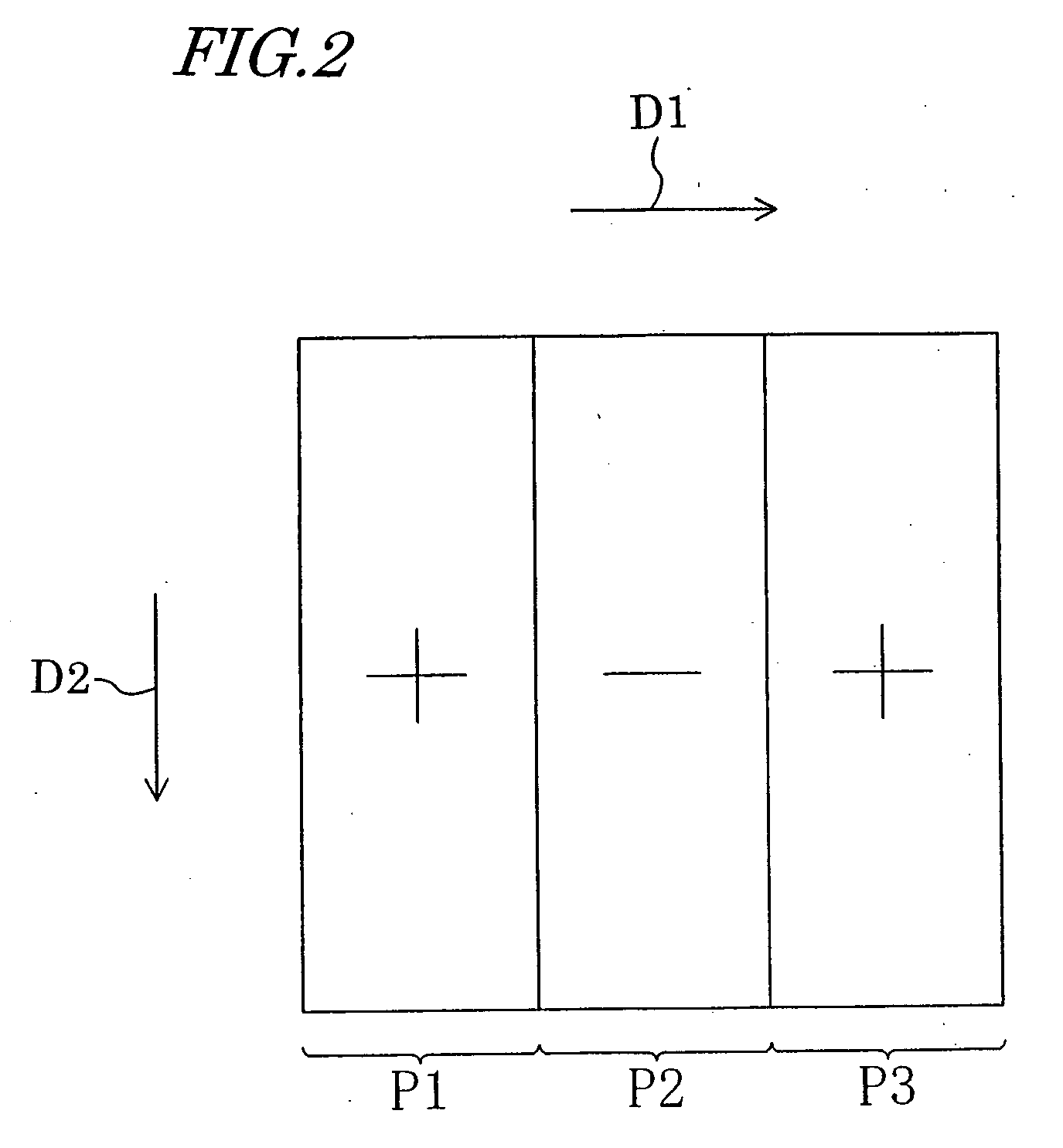Liquid crystal display device
a liquid crystal display and display device technology, applied in static indicating devices, non-linear optics, instruments, etc., can solve the problems of difficult to realize stable production of devices, narrow viewing angle of conventional twist nematic and super twist nematic liquid crystal display devices, and high probability of rubbing streaks in displayed images. achieve the effect of wide viewing angle, high continuity, and improved display quality of conventional liquid crystal display devices
- Summary
- Abstract
- Description
- Claims
- Application Information
AI Technical Summary
Benefits of technology
Problems solved by technology
Method used
Image
Examples
embodiment 1
[0084] The structure of a liquid crystal display device 100 according to the present embodiment will now be described with reference to FIG. 1A and FIG. 1B. In the following description, a color filter and a black matrix are omitted for the sake of simplicity. Moreover, in subsequent figures, each element having substantially the same function as the corresponding element in the liquid crystal display device 100 will be denoted by the same reference numeral and will not be further described below. FIG. 1A is a plan view illustrating three picture element regions P1, P2 and P3 of the liquid crystal display device 100 as viewed in the substrate normal direction, and FIG. 1B is a cross-sectional view taken along line 1B-1B′ of FIG. 1A. FIG. 1B illustrates a state where no voltage is applied across a liquid crystal layer.
[0085] The liquid crystal display device 100 includes an active matrix substrate (hereinafter referred to as a “TFT substrate”) 100a, a counter substrate (referred to ...
embodiment 2
[0168] The liquid crystal display device of the present embodiment is different from the liquid crystal display device 100 of Embodiment 1 in that the counter substrate includes an orientation-regulating structure.
[0169]FIG. 19A to FIG. 19E schematically illustrate a counter substrate 200b having an orientation-regulating structure 28. Each element having substantially the same function as that of the liquid crystal display device 100 will be denoted by the same reference numeral and will not be further described.
[0170] The orientation-regulating structure 28 illustrated in FIG. 19A to FIG. 19E functions to orient the liquid crystal molecules 30a of the liquid crystal layer 30 into a radially-inclined orientation. Note that the orientation-regulating structure 28 illustrated in FIG. 19A to FIG. 19D and that illustrated in FIG. 19E are different in terms of the direction in which the liquid crystal molecules 30a are to be inclined.
[0171] The direction in which the liquid crystal m...
embodiment 3
[0216] A liquid crystal display device 300 of the present embodiment will now be described with reference to FIG. 36. The liquid crystal display device 300 is different from the liquid crystal display device 100 illustrated in FIG. 1A and FIG. 1B in that the thickness de of the liquid crystal layer 30 at an edge portion of the sub-electrode 14a placed in the transmission region T is smaller than the thickness dc of the liquid crystal layer 30 at a central portion of the sub-electrode 14a, as illustrated in FIG. 36.
[0217] The response speed of the liquid crystal molecules 30a is typically higher as the thickness of the liquid crystal layer 30 (cell gap) is smaller (whereby the effect of the electric field is more significant), and it is generally inversely proportional to the square of the thickness of the liquid crystal layer 30. Therefore, if the thickness de of the liquid crystal layer 30 at the edge portion (outer periphery) of the sub-electrode 14a is smaller than the thickness...
PUM
| Property | Measurement | Unit |
|---|---|---|
| angle | aaaaa | aaaaa |
| width | aaaaa | aaaaa |
| width | aaaaa | aaaaa |
Abstract
Description
Claims
Application Information
 Login to View More
Login to View More - R&D
- Intellectual Property
- Life Sciences
- Materials
- Tech Scout
- Unparalleled Data Quality
- Higher Quality Content
- 60% Fewer Hallucinations
Browse by: Latest US Patents, China's latest patents, Technical Efficacy Thesaurus, Application Domain, Technology Topic, Popular Technical Reports.
© 2025 PatSnap. All rights reserved.Legal|Privacy policy|Modern Slavery Act Transparency Statement|Sitemap|About US| Contact US: help@patsnap.com



